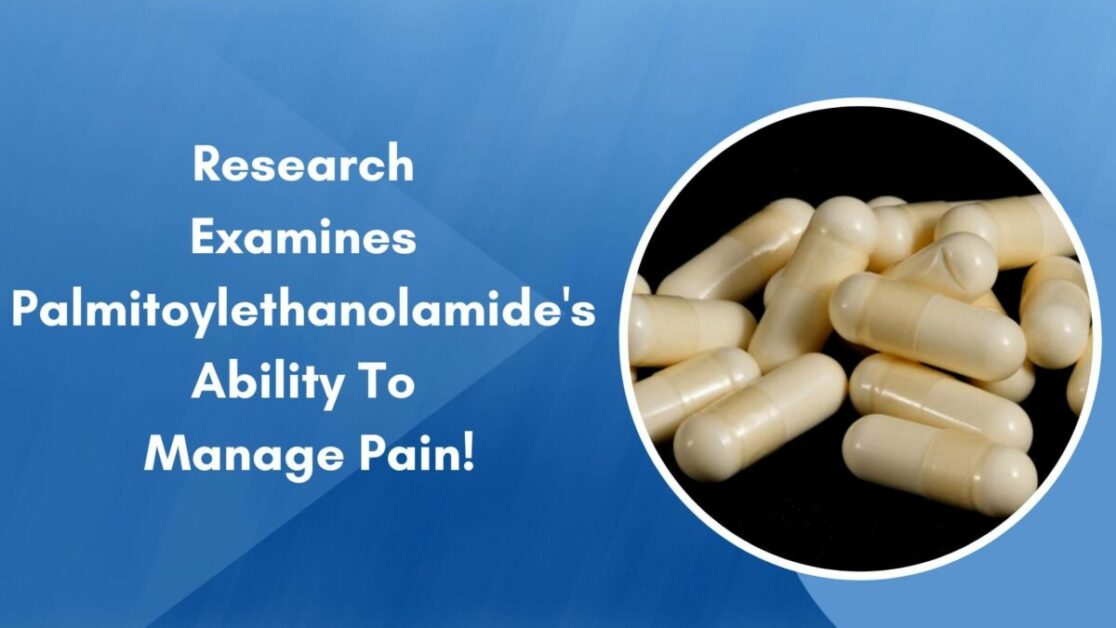Research Examines Palmitoylethanolamide’s Ability To Manage Pain!

Palmitoylethanolamide (PEA) is a chemical process from fat naturally found in foods like soybeans, egg yolk, peanuts, etc and it belongs to the family of N-acylethanolamine (NAE) phospholipids. It is an endogenous fatty acid amide and a lipid modulator that is produced in the human body as a natural response to injury and stress.
It was discovered back in 1957 and it has been indicated to be used as an anti-inflammatory and analgesic even before 1980.
Palmitoylethanolamide: What Is It Used For?
PEA is proven to be effective in the treatment of a wide variety of conditions like fibromyalgia, osteoarthritis, multiple sclerosis (MS), etc. although it hasn’t been widely prescribed because of the lack of more convincing evidence.
PEA-based products and supplements have been marketed in different countries either as Food for Special Medical Purposes (FSMP) or food supplements usually recommended at a dose of 1200 mg/day.

PEA basically works by reducing the sensitivity to pain in the central and peripheral nervous systems.
A research study titled The Effect of Palmitoylethanolamide on Pain Intensity, Central and Peripheral Sensitization, and Pain Modulation in Healthy Volunteers—A Randomized, Double-Blinded, Placebo-Controlled Crossover Trial published in the Nutrient Journal’s special issue presents PEA as an effective alternative to more frequently used analgesic drugs like NSAIDs (Non-Steroidal Anti-Inflammatory Drugs) and opioids.
The most known forms of NSAIDs like Aspirin, Ibuprofen, Naproxen Sodium, etc. are known to have side effects like stomach ulcers, diarrhea, and constipation and they can even lead to the development of heart issues in long-term use.
These NSAID drugs are the most commonly used for analgesic therapy and the side effects caused by them are hard to ignore. Their effective range has also been disputed when compared to other forms of medications like PEA. In this light, PEA seems to be an efficient alternative and research studies are also pointing towards the same.
The above study was done on healthy adult volunteers aged 18 and above who were recruited as participants by posting in a university showcase. After assessing their eligibility, oral and written informed consent were obtained. Each of the participants received 90 tablets, which were either 400 mg of PEA or a visually identical placebo tablet.
Towards the end of the study, it was found that PEA reduces inflammation by increasing the action of anti-inflammatory proteins and reducing the effect of proinflammatory cytokines. When viewing from a clinical perspective, the most relevant and encouraging aspects of PEA are connected to the neuropathic and chronic pain states.
These types of pains can be experienced in conditions such as diabetic neuropathic pain, sciatic pain, CRPS, pelvic pain, and entrapment neuropathic pain states. A meta-review article was published in 2013 on the efficacy and safety of PEA in the treatment of the common cold and influenza, proving its proposed anti-inflammatory effects.
Another 2013 study also pointed out the benefits of PEA in treating pelvic pain in women affected by endometriosis. Endometriosis is a condition that develops in menstruating women where cells akin to the lining of the uterus or endometrium grow outside of the uterus causing pain and menstrual irregularities.
The research found that analgesic therapy using PEA is effective in improving the quality of life of female patients and it also gradually led to a decrease in the use of NSAID-based drugs in countering the pain and discomfort caused by endometriosis.
A comparative study was done in 2012 with Ibuprofen and PEA also suggested that treatment using PEA seems to reduce pain in TMJ (Temporomandibular Joint) Osteoarthritis patients and they were able to open their mouths to a larger extent than the NSAID Ibuprofen-based treatment.
The study concluded by stating that PEA seems to be effective in treating TMJ Osteoarthritis inflammatory pain. All these research points to the fact that Palmitoylethanolamide is in fact a plausible alternative to NSAID-based analgesic drugs that cause concerning side effects in humans.
Side-Effects Of PEA
There hasn’t been much evidence about the possible side effects of PEA therapy. According to WebMD, it is shown to be a well-tolerated medicine in most patients when orally administered for up to 3 months although some people complained of nausea.
When applied to the skin, it was found to be safe for up to 28 days. More research is being done on the side effects of PEA-based analgesic therapy.
Dr. Elizabeth Novello
Dr. Elizabeth Novello specializes in the diagnosis and treatment of disorders of the nervous system. Her clients range across diverse age groups and she works closely with patients to develop a personalized treatment plan that takes into account the individual's medical history and the underlying cause of their pain. Dr. Elizabeth Novello also performs procedures such as lumbar punctures or nerve conduction studies. In addition to diagnosing and treating specific conditions, she focuses on helping patients manage chronic conditions and providing support for patients and their families.
View All By Dr. Elizabeth

